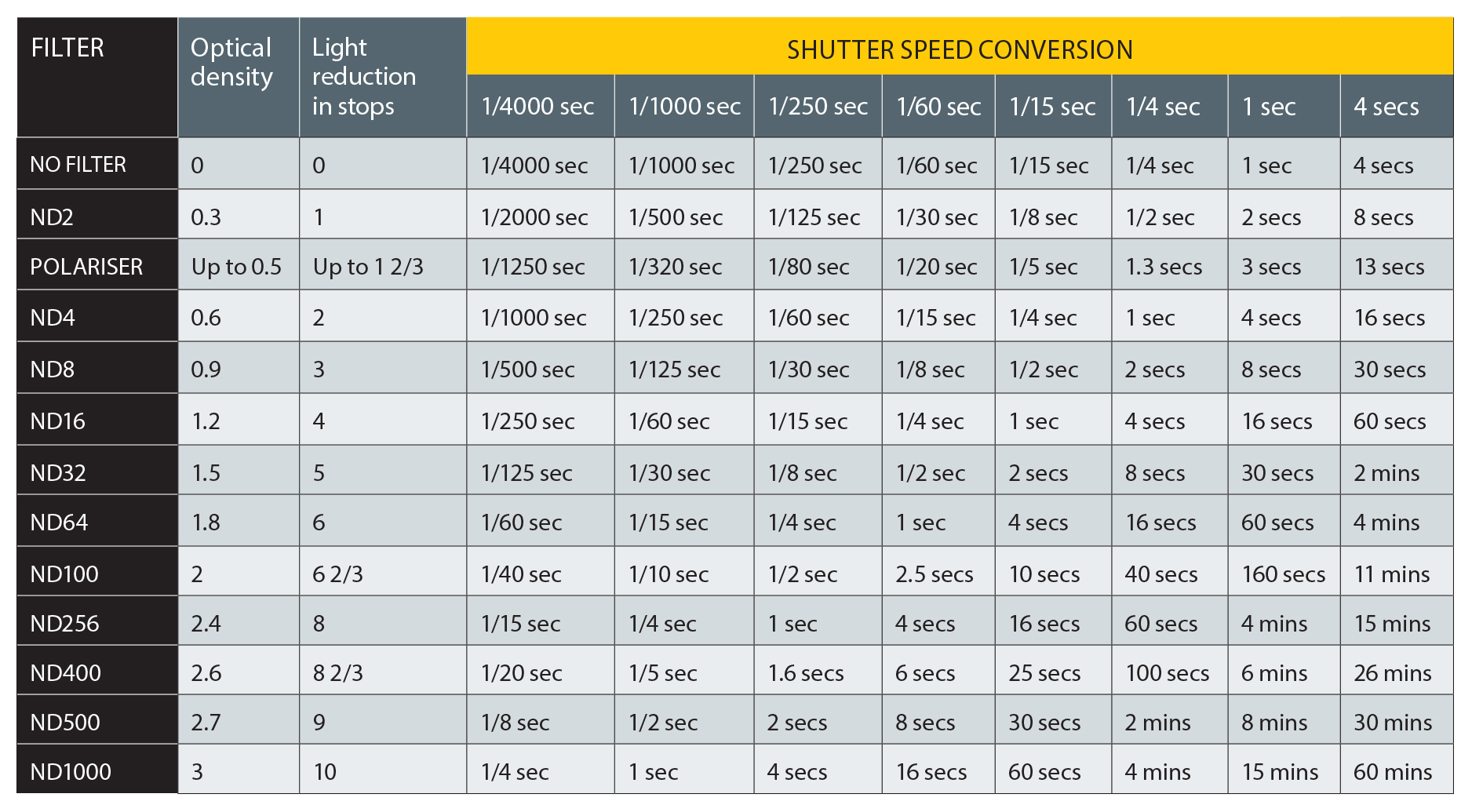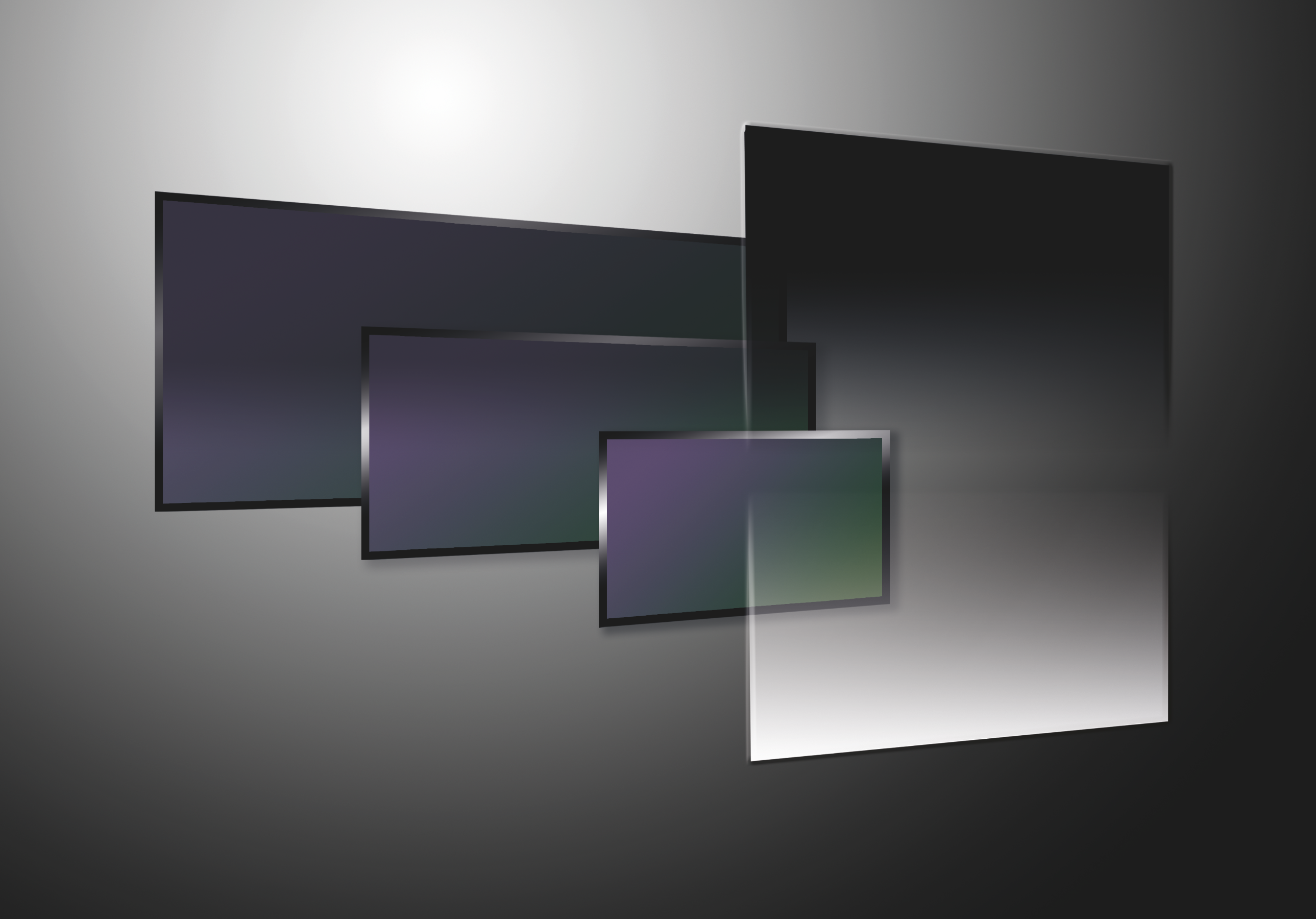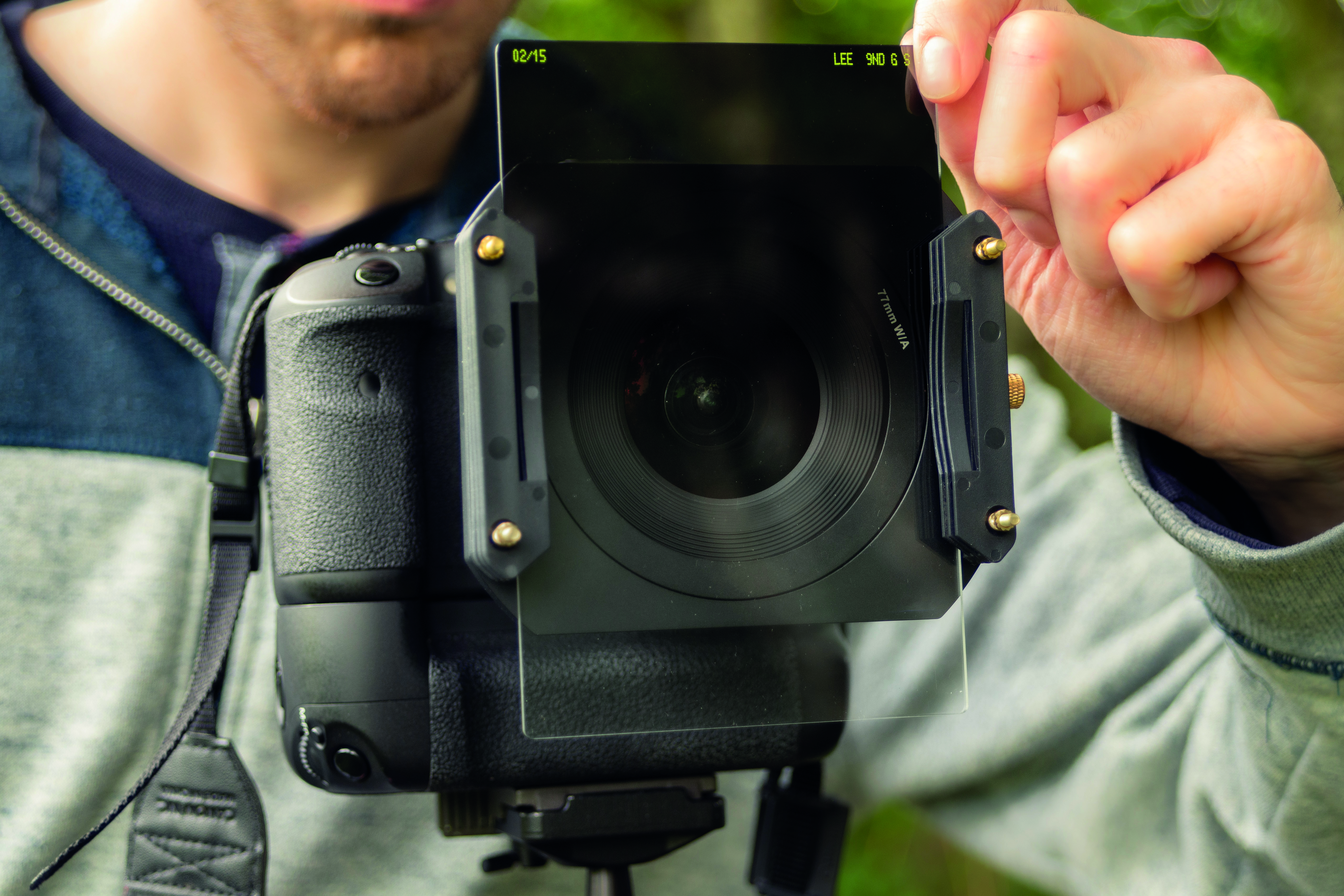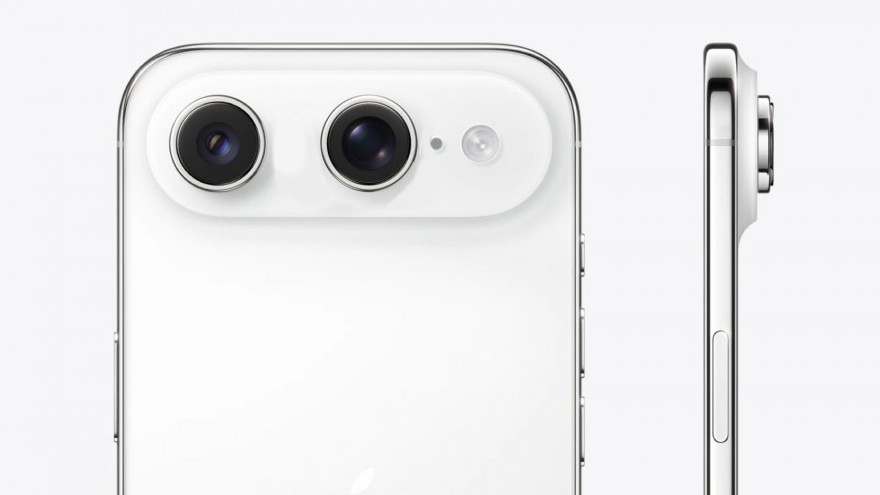Photography cheat sheet: ND filter shutter speed exposure table
The best neutral density filters will help you capture incredible long exposures – even in bright sunshine. The chart below shows you how different filters affect your shutter speed

The best neutral density filters are an excellent tool for landscape photographers, since they reduce the intensity of light hitting the lens (and your sensor) and enable you to extend the shutter speed – even in the middle of the day. In doing so, you can capture creative long exposures, such as blurred water movement at the coast or ghostly clouds across the scene.
ND filters are essentially darkened pieces of glass that go in front of your lens, and they come in several varieties: solid, graduated and variable. But which one should you choose? The best variable ND filters are incredibly useful when you don’t know which densities you will need and don’t want to carry four or five separate strengths. By rotating the filter, you can choose a stepless density range of often around two to eight stops.
Read more: What is a graduated filter, and when would you use one?
A good practice is to carry a 0.9ND, a 0.3ND and a variable ND, meaning if you can manage with a single filter, then do, but you have a variable model at your disposal, for intermediate densities.
ND filter strengths and your shutter speed
Neutral Density filters are made in wide number different strengths, and different scales are used to measure this. Some manufacturers use an NDxx number, others can quote a number for the optical density, and some use a figure to describe the light reduction in ‘stops’.
Are you wondering how the strength of a filter affects your exposure and therefore the shutter speed that you should be using?
The table here compares the systems and shows how much slower a shutter speed each filter type will let you achieve with your camera. Why not save it to your phone and refer to it the next time that you're shooting a glorious landscape in the field.
The best camera deals, reviews, product advice, and unmissable photography news, direct to your inbox!
Sensor size impacts the strength of your filters
It’s not the first thing many photographers think about when choosing a filter, but the size of the sensor in your camera will affect how it works. Smaller sensors apply a magnification factor that effectively zooms the image, meaning the gradient of an ND grad filter, for example, will cover a greater area of the visible frame.
This has the effect of softening the transition and making a hard grad look more like a soft grad. Take this into account when selecting your filter to ensure that it will provide a suitable effect for the scene you are shooting.

Read more:
• 10 things you need to know about camera filters
• Best variable ND filters
• Best camera accessories
• Best protection filters for lenses
• How to use ND filters for long exposures during the day
• How to shoot and process long-exposure seascapes
• The best polarizing filters

Chris George has worked on Digital Camera World since its launch in 2017. He has been writing about photography, mobile phones, video making and technology for over 30 years – and has edited numerous magazines including PhotoPlus, N-Photo, Digital Camera, Video Camera, and Professional Photography.
His first serious camera was the iconic Olympus OM10, with which he won the title of Young Photographer of the Year - long before the advent of autofocus and memory cards. Today he uses a Sony A7 IV, alongside his old Nikon D800 and his iPhone 15 Pro Max.
He is the author of a number of books including The Book of Digital Photography, which has been translated into a dozen different languages.
In addition to his expertise in photography and videomaking, he has written about technology for countless publications and websites including The Sunday Times Magazine, The Daily Telegraph, What Cellphone, T3 and Techradar.
- Lauren ScottFreelance contributor/former Managing Editor

